The clever minds at prestigious Keio University in Tokyo have created a new device that makes the rear seat “disappear” when reversing, and have released a new video demonstrating how, with its help, the sometimes arduous task of reversing into a space could soon become a breeze.
Tinkering around with a modified Toyota Prius, the university’s graduate research team have been putting their latest technology through its paces by having a driver with a particular fear of reverse parking give the maneuver a shot both with and without the device installed…
Keio University was established in 1858 in an old manor house in Tsukiji, Tokyo- a town that many readers will know as the location of the famous Tokyo fish market where much of the nation’s seafood arrives and is auctioned off, sometimes for incredible prices.
The university boasts that it is the oldest tertiary education institute in the country, and has come to be known as the location where many elite students further their education, and are often marked for great things thereafter.
This week, the Keio University Graduate Research Institute unveiled an interesting new device this week that they say makes the rear of the car disappear.
But what does that mean exactly? Take a look for yourself in this video:
http://www.youtube.com/watch?v=12qLDRuxSws&feature=player_embedded
The driver, referred to in the video as a “paper driver” since she holds a valid licence but does not actually drive (you’d be surprised how many people like this live in urban areas!), admits that she has trouble reversing into parking spaces…
But she’s precisely the kind of driver the institute need to test out Keio’s new gadget!
After a quick spin around the parking lot to ensure that the driver, Ms. Takahashi, is not about to career off the road and mow a few passing students down, it’s time to try reserving into a spot marked out by rows of blue plastic cones. Turning to look over her shoulder, Ms. Takahashi extends a finger to push a small button on the pre-installed. “Wow, that’s amazing!” she exclaims.
While no part of the car itself changes- even though some of us were hoping for some Transformers-esque metallic mutations- something kind of cool happens inside the vehicle.
What we can see here is the small tablet computer-sized screen fitted just behind the driver, between the driver and passenger seat.
At the top of the image, we can clearly see the inside of the car, but on the screen, it’s as if we’re looking directly through of the back of the vehicle. Shopping, kids, sports gear, dogs; whatever’s in the back seat seems to vanish and the driver can clearly see what is directly behind the car.
If someone is standing behind the car, for example, we can clearly see their body on the screen, while their top half appears in the rear window.
The effect is kind of freaky, but could no doubt prove to be hugely helpful to drivers who struggle with this maneuver.
Let’s see the device put to the test!
First, Ms. Takahashi attempts a reverse park into a bay without the help of the rear seat invisibility unit..
▼Is anyone else glad that she’s a “paper driver” and not out there smashing into real cars?
OK, so we know that she’s not kidding when she says backing into spaces isn’t her speciality.
But will an “invisible” back seat really rescue her from a life of flattening slow-moving pensioners and scratching up sports cars? Let’s find out!
Looking over her shoulder and into the seemingly transparent pane of tinted glass, Ms. Takahashi is able to see the street behind the vehicle.
There’s a moment during the maneuver when she looks like she’s about to hit a cone, but, thanks to the magical screen, she’s able to adjust the position of the car.
Aaaand park!
I think we could call that a success, couldn’t we!?
No word yet on when the device will find its way into road models, but knowing Japan’s love for technology, it can’t be far away.
Although devices like rear-mounted cameras alreay exist, the current models require the driver to focus their attention on a dash-mounted screen, meaning that they are left completely unaware of the area they are reversing into besides that which is shown on the screen. Keio University’s new toy means that drivers can turn their attention to the rear of the vehicle entirely, meaning that the whole process of backing into a space suddenly becomes much safer for people like you and me who might otherwise find ourselves trapped behind cars being driven by Ms Takahashi here.
“But why back into a space at all?” I hear you cry, ever so softly. “Couldn’t these people just park front-end first?”
Well, in Japan it’s considered polite (of course!) to reverse into parking spaces rather than reverse out of them when you leave. While you might think that this takes longer to do, since backing into a space is far trickier than reversing back into a larger area, the idea is that, by backing in rather than out, we’re less likely to cause an accident by colliding with passing traffic or people when we leave.
And thanks to the clever boys and girls at Keio University, we might all be doing it a little easier very soon…
Source: Yahoo! Japan Video/images: Ecocarkaigi Title image: Autotrader edited by RocketNews24

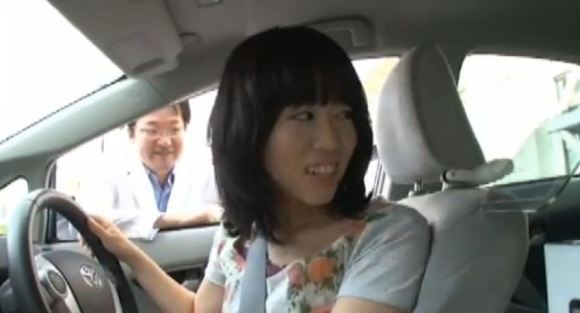
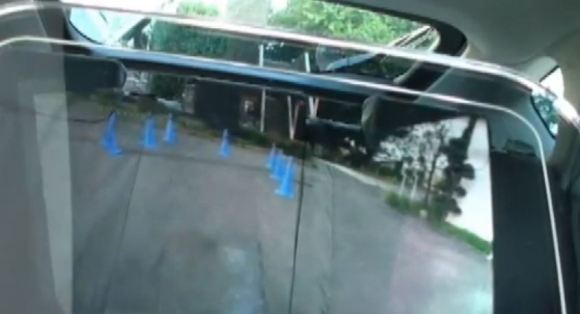
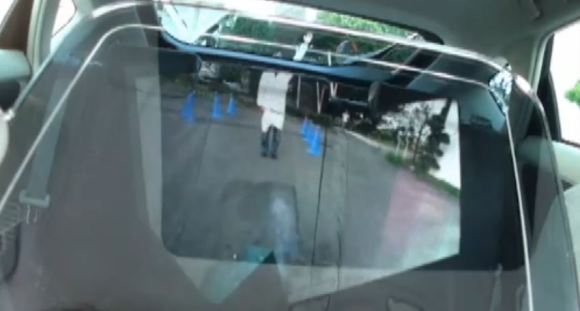
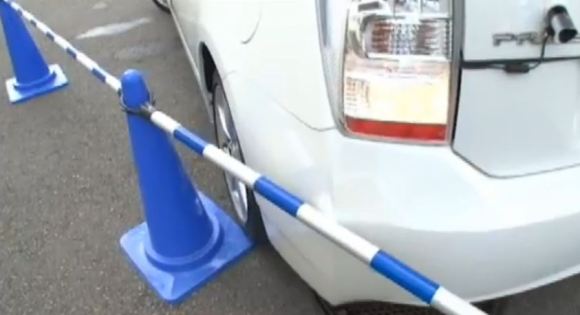
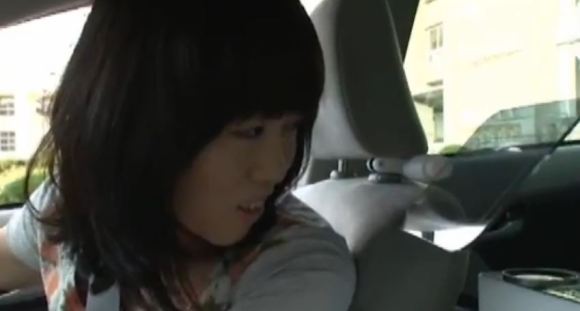
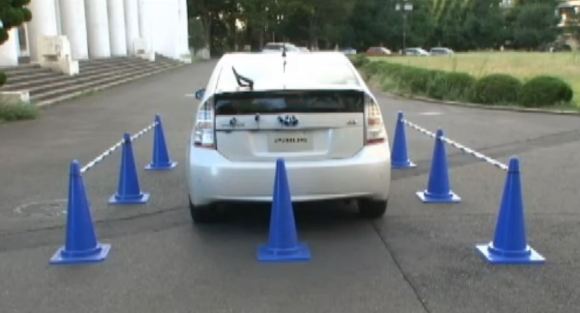

 Nissan unveils the world’s first “Intelligent Parking Chair”【Video】
Nissan unveils the world’s first “Intelligent Parking Chair”【Video】 Honda’s automated valet parking service in action 【Video】
Honda’s automated valet parking service in action 【Video】 The reasons why Japanese highway rest stops have angled parking
The reasons why Japanese highway rest stops have angled parking New meets old while testing a Tesla in Kyoto in honor of Japan’s first Urban Superchargers
New meets old while testing a Tesla in Kyoto in honor of Japan’s first Urban Superchargers Every weekend is an itasha car show at Akihabara’s UDX parking garage
Every weekend is an itasha car show at Akihabara’s UDX parking garage Japan may add Japanese language proficiency, lifestyle classes to permanent foreign resident requirements
Japan may add Japanese language proficiency, lifestyle classes to permanent foreign resident requirements Lacquerware supplier to emperor of Japan and Pokémon team up for new tableware
Lacquerware supplier to emperor of Japan and Pokémon team up for new tableware Dragon Quest Burgers and Slime drinks are coming to McDonald’s Japan【Video】
Dragon Quest Burgers and Slime drinks are coming to McDonald’s Japan【Video】 More Than a Capsule Stay: Why Solo Travelers Choose “global cabin Yokohama Chinatown”
More Than a Capsule Stay: Why Solo Travelers Choose “global cabin Yokohama Chinatown” Yoshinoya adds first-ever chain-wide ramen with new beef and pork-broth noodle hot pot meals
Yoshinoya adds first-ever chain-wide ramen with new beef and pork-broth noodle hot pot meals Elderly Kyoto man detained by police for three hours because of hammer in his car
Elderly Kyoto man detained by police for three hours because of hammer in his car Starbucks Japan releases cute new zodiac goods for Year of the Rabbit
Starbucks Japan releases cute new zodiac goods for Year of the Rabbit Pokémon fans aren’t happy with the Mister Donut fukubukuro lucky bag for 2025
Pokémon fans aren’t happy with the Mister Donut fukubukuro lucky bag for 2025 How well do you know your sushi? New 3-D puzzle toy from Japan helps you become a salmon pro
How well do you know your sushi? New 3-D puzzle toy from Japan helps you become a salmon pro Disillusionment at Tsukiji’s tourist-target prices led us to a great ramen restaurant in Tokyo
Disillusionment at Tsukiji’s tourist-target prices led us to a great ramen restaurant in Tokyo 7-Eleven Japan starts new temporary luggage storage service in over 300 branches
7-Eleven Japan starts new temporary luggage storage service in over 300 branches Starbucks teams up with 166-year-old Kyoto doll maker for Year of the Horse decorations【Photos】
Starbucks teams up with 166-year-old Kyoto doll maker for Year of the Horse decorations【Photos】 Tokyo’s Tsukiji sushi neighborhood asks tour groups to stay away for the rest of the month
Tokyo’s Tsukiji sushi neighborhood asks tour groups to stay away for the rest of the month Starbucks Japan releases new zodiac chilled cup drink for 2026
Starbucks Japan releases new zodiac chilled cup drink for 2026 Street Fighter Hadouken Churros to be launched and eaten in Tokyo, Okami pudding on offer too
Street Fighter Hadouken Churros to be launched and eaten in Tokyo, Okami pudding on offer too Is this the most relaxing Starbucks in Japan?
Is this the most relaxing Starbucks in Japan? Starbucks on a Shinkansen bullet train platform: 6 tips for using the automated store in Japan
Starbucks on a Shinkansen bullet train platform: 6 tips for using the automated store in Japan Large amount of supposed human organs left in Osaka marketplace
Large amount of supposed human organs left in Osaka marketplace Japan’s human washing machines will go on sale to general public, demos to be held in Tokyo
Japan’s human washing machines will go on sale to general public, demos to be held in Tokyo Japanese train company is letting fans buy its actual ticket gates for their homes
Japanese train company is letting fans buy its actual ticket gates for their homes Tokyo considering law requiring more trash cans following litter increase in heavily touristed area
Tokyo considering law requiring more trash cans following litter increase in heavily touristed area Is China’s don’t-go-to-Japan warning affecting tourist crowds in Tokyo’s Asakusa neighborhood?
Is China’s don’t-go-to-Japan warning affecting tourist crowds in Tokyo’s Asakusa neighborhood? Nintendo’s Kirby now delivering orders at Kura Sushi restaurants, but not in Japan
Nintendo’s Kirby now delivering orders at Kura Sushi restaurants, but not in Japan Tokyo event lets you travel back in time, for free, to celebrate 100 years since Showa era start
Tokyo event lets you travel back in time, for free, to celebrate 100 years since Showa era start Survey asks foreign tourists what bothered them in Japan, more than half gave same answer
Survey asks foreign tourists what bothered them in Japan, more than half gave same answer Japan’s deadliest food claims more victims, but why do people keep eating it for New Year’s?
Japan’s deadliest food claims more victims, but why do people keep eating it for New Year’s? We deeply regret going into this tunnel on our walk in the mountains of Japan
We deeply regret going into this tunnel on our walk in the mountains of Japan Studio Ghibli releases Kodama forest spirits from Princess Mononoke to light up your home
Studio Ghibli releases Kodama forest spirits from Princess Mononoke to light up your home Major Japanese hotel chain says reservations via overseas booking sites may not be valid
Major Japanese hotel chain says reservations via overseas booking sites may not be valid Put sesame oil in your coffee? Japanese maker says it’s the best way to start your day【Taste test】
Put sesame oil in your coffee? Japanese maker says it’s the best way to start your day【Taste test】 The top 10 annoying foreign tourist behaviors on trains, as chosen by Japanese people【Survey】
The top 10 annoying foreign tourist behaviors on trains, as chosen by Japanese people【Survey】 No more using real katana for tourism activities, Japan’s National Police Agency says
No more using real katana for tourism activities, Japan’s National Police Agency says Starbucks Japan reveals new sakura drinkware collection, inspired by evening cherry blossoms
Starbucks Japan reveals new sakura drinkware collection, inspired by evening cherry blossoms Getting a driver’s license in Japan the hard way: The first driving test a few more times
Getting a driver’s license in Japan the hard way: The first driving test a few more times
Leave a Reply